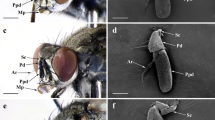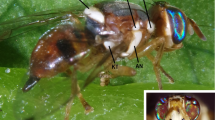Abstract
IN general, the fat bodies of insects are distributed in two anatomical positions: they exist as a peripheral layer beneath the epidermis and a perivisceral layer surrounding the alimentary canal. The lobes lie freely in the haemocoel; in most insects they are held in position by means of the tracheal branches, but in some the individual cells of the fat body seem to float freely in the haemocoel. In many insects the fat body fills all the available space within the body cavity, and can be seen to surround the visceral organs such as the gonads. They are never directly attached, however, to the organs, but are connected to them by means of tracheae. Recently, we have observed a unique distribution of the fat bodies in the imago of Oryctes rhinoceros.
This is a preview of subscription content, access via your institution
Access options
Subscribe to this journal
Receive 51 print issues and online access
$199.00 per year
only $3.90 per issue
Buy this article
- Purchase on Springer Link
- Instant access to full article PDF
Prices may be subject to local taxes which are calculated during checkout
Similar content being viewed by others
References
Lazarenko, T., Z. Mikr. Anat. Forsch., 3, 409 (1925).
Author information
Authors and Affiliations
Rights and permissions
About this article
Cite this article
NAIR, K., KARNAVAR, G. Distribution of Fat Body around the Air Sacs and Muscle Fibres in the Imago of Oryctes rhinoceros. Nature 211, 1207–1208 (1966). https://doi.org/10.1038/2111207a0
Issue Date:
DOI: https://doi.org/10.1038/2111207a0
Comments
By submitting a comment you agree to abide by our Terms and Community Guidelines. If you find something abusive or that does not comply with our terms or guidelines please flag it as inappropriate.



